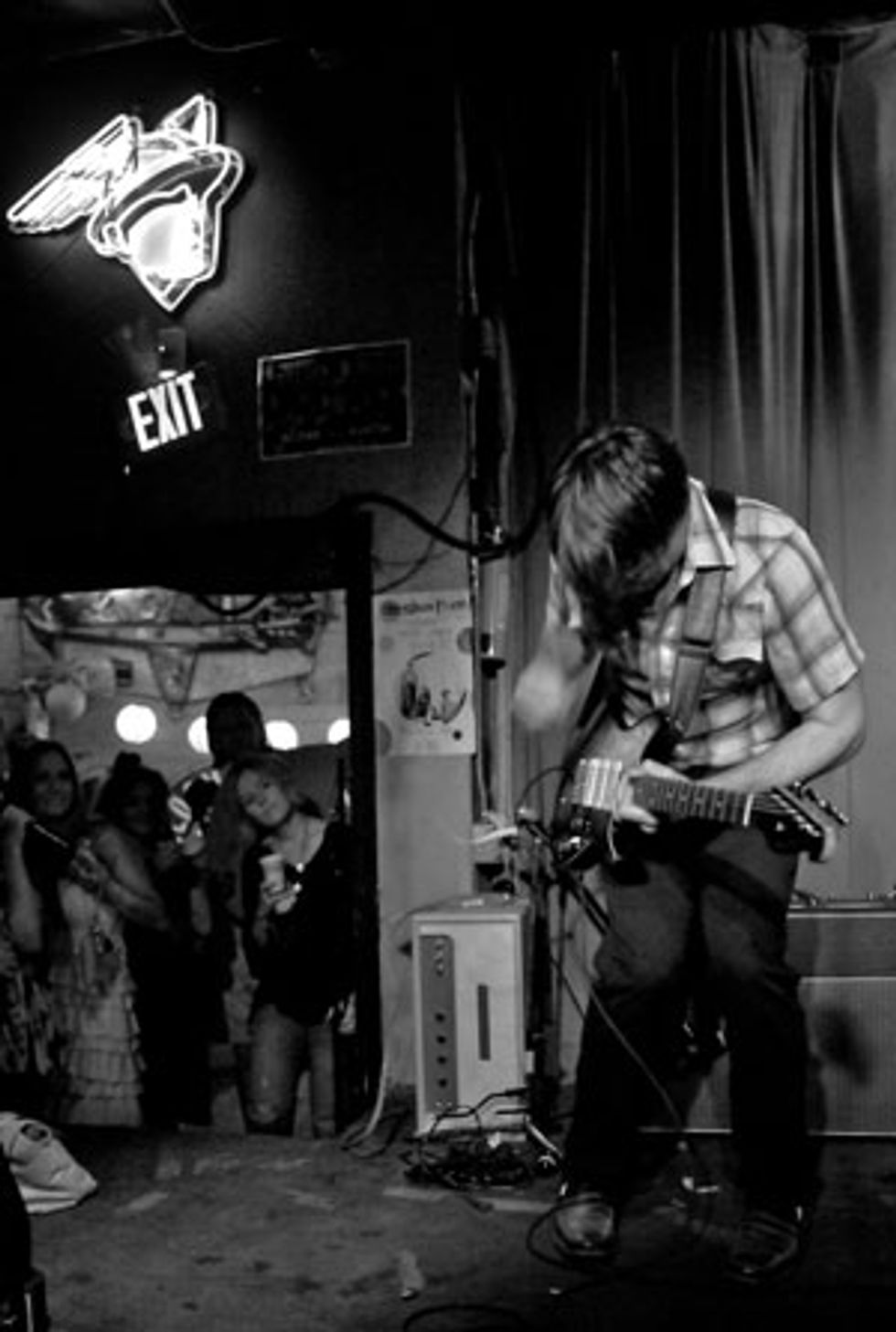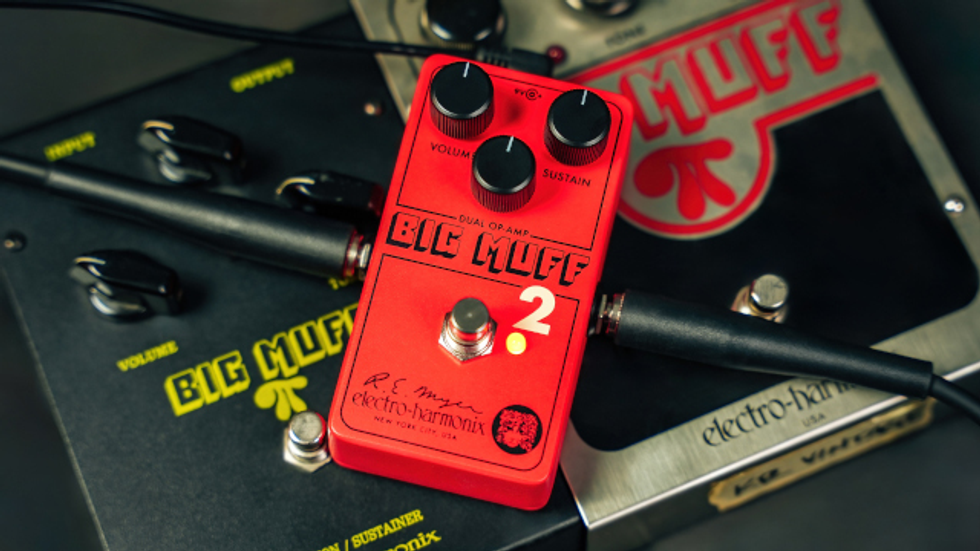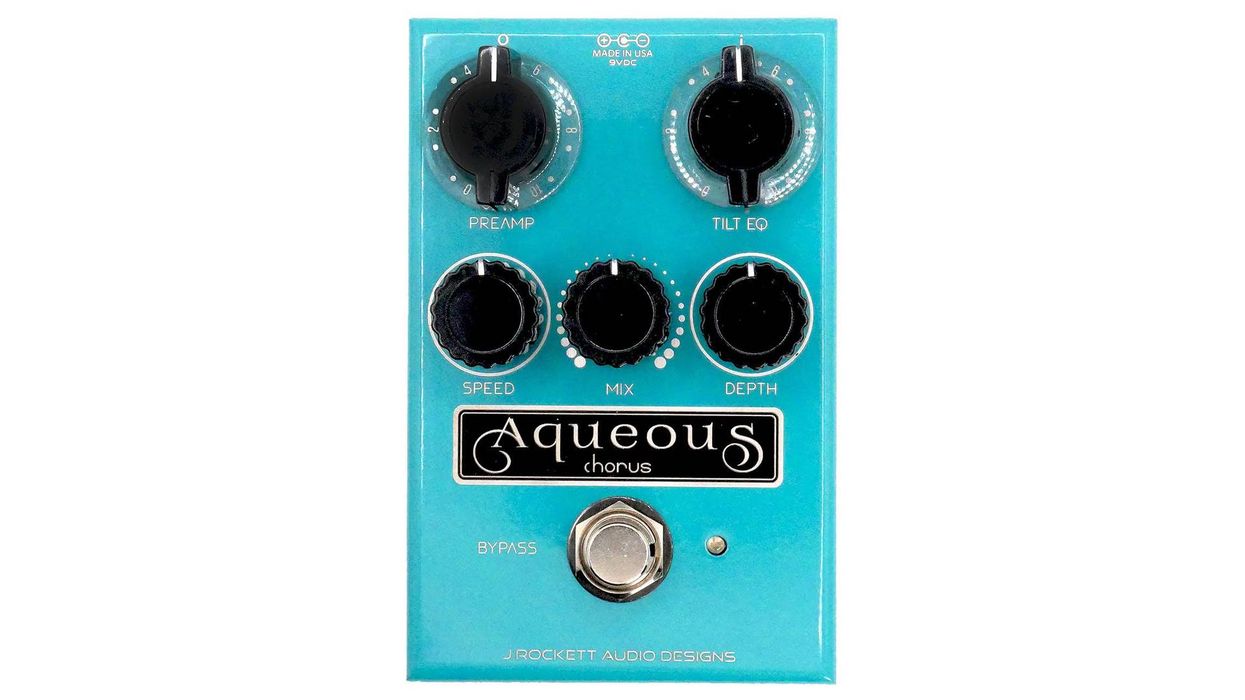Hello fellow travelers, nice to virtually meet you, and welcome to the first ever “Into the Wild” column I’ll be writing monthly for Premier Guitar. I decided to call my column “Into the Wild,” as the guitar has molded and reshaped my world, casting me into a wilderness that has been at times confusing and overwhelming, and at other times bountiful and serene. It has taken me all over the world, brought me accolades and attention, and filled up my life in ways that I could have never imagined upon first picking it up.
I first fell in love with the guitar in the ‘70s, going to shows at Austin clubs like Soap Creek and the Armadillo with my parents. This was the dawning of the next wave of soul and blues in Austin, and everyone was playing Fender amps and guitars. I remember a strange obsession with the different color jewel lights that seemed to glow perfectly in line with the music that was being played on those stages by the likes of Denny Freeman, the Vaughan Brothers, Doug Sahm, and the countless less-heralded guitarists that seemed more common than cockroaches at that time. I begged my Mom for a guitar, but she hedged her bets and got me a violin. I spent much of my youth involved in the Suzuki system and, later, junior symphonies, falling in love with the myriad of sounds and colors that came from the instrument. I still have a visceral feeling of both the immense power of playing as part of a full orchestra, as well as the terror and exhilaration of my very first solo recitals.
I was pretty well settled into my life of being a classical violinist when my path was irrevocably changed. In a freak accident, I fell backwards onto a glass, slicing all of the tendons in my left hand, and pretty much ending that stage of my life. I was completely crushed, and I got a guitar, largely through my mother’s guilt, for therapy of my left hand. My early forays into guitar were pretty frustrating. Not only was my left arm slow to heal, but it was hard to accept the initial learning curve of chords and notes that were unwilling to yield easily to my half-baked stabs at guitar mastery.
I finally had “that night” during Antone’s 10th anniversary celebration, which turned out to be a zenith of blues guitar power that I have never seen since. Pretty much every one of my guitar faves seemed to play that weekend—Albert Collins, Otis Rush, Hubert Sumlin, Mel Brown, Luther Tucker, Johnny Copeland, the Vaughans, and Buddy Guy. Buddy had been mounting a comeback, largely supported by Clifford Antone, and he came out on the stage with a fervor and passion that still chills me to this day. I went home and played guitar well through the night, and shifted my determination to play to a whole new level.
From that point, everything seemed to speed up quite a bit. I got a band together, started playing regionally through Texas. I was offered a national tour, and had a serious meeting with my counselor at UT, where I was going to school. I assured her I would be back after the tour to continue with my studies. Needless to say, school fell to the wayside, and all of my newfound time was refocused on music 24/7. I signed my first major deal in ’91 with EMI, and finally got a record out on Capricorn in’92. That record took me and the band all over the world, put me on tours with the Rolling Stones, Bob Dylan, and ZZ Top, and allowed me to work with players, writers, and producers that stretched my mind and music.
My reputation was as a ‘blues-rock’ guitarist, and I, as well as Charlie Sexton and Doyle Bramhall, was constantly compared to Stevie, especially after his tragic death. As anyone in any scene knows, perception is quite different amongst your peers, and the exterior defining of our scene made for some bumpy times. I continued growing both with the guitar and music, looking for inspiration and light in new music’s that came my way.
Around 2000, I put the electric away for a few years and fell deep into the spell of the acoustic world, not playing any electric shows for around four years. That wilderness was a beautiful, strange time, and upon picking the electric up again a few years ago I was struck with a fresh and unburdened take on it that reminded me of why I had started playing in the first place. I also got into building audio gear— preamps, compressors, guitar amps, etc. Each time I looked for a new hobby or diversion, I found myself back in the same place, with my guitar, but often from a new vantage point that revealed itself in a glory until then unknown.
I still marvel at the how the guitar can morph from player to player, how it can change so much as it changes hands, and I still constantly find myself in awe of the many ways people have mastered its angles to conform to their needs. I hope to explore some of these in future columns, as well as looking to my many gifted electronics friends for insight into what they do why they do it. I may do some cereal box philosophizing. I apologize in advance if it gets too precious or presumptuous, but I can’t help but dance about, trying to understand the inner machinations of it all.
I’m still staring at that jewel light, enthralled. It hasn’t faded.
 Ian Moore is an Austin, Texas-based guitarist who has had his hands in a bit of everything related to guitar, from an acclaimed solo career to building and modifying his own gear to being a sideman for pop star Jason Mraz. ianmoore.com
Ian Moore is an Austin, Texas-based guitarist who has had his hands in a bit of everything related to guitar, from an acclaimed solo career to building and modifying his own gear to being a sideman for pop star Jason Mraz. ianmoore.com
I first fell in love with the guitar in the ‘70s, going to shows at Austin clubs like Soap Creek and the Armadillo with my parents. This was the dawning of the next wave of soul and blues in Austin, and everyone was playing Fender amps and guitars. I remember a strange obsession with the different color jewel lights that seemed to glow perfectly in line with the music that was being played on those stages by the likes of Denny Freeman, the Vaughan Brothers, Doug Sahm, and the countless less-heralded guitarists that seemed more common than cockroaches at that time. I begged my Mom for a guitar, but she hedged her bets and got me a violin. I spent much of my youth involved in the Suzuki system and, later, junior symphonies, falling in love with the myriad of sounds and colors that came from the instrument. I still have a visceral feeling of both the immense power of playing as part of a full orchestra, as well as the terror and exhilaration of my very first solo recitals.
I was pretty well settled into my life of being a classical violinist when my path was irrevocably changed. In a freak accident, I fell backwards onto a glass, slicing all of the tendons in my left hand, and pretty much ending that stage of my life. I was completely crushed, and I got a guitar, largely through my mother’s guilt, for therapy of my left hand. My early forays into guitar were pretty frustrating. Not only was my left arm slow to heal, but it was hard to accept the initial learning curve of chords and notes that were unwilling to yield easily to my half-baked stabs at guitar mastery.
I finally had “that night” during Antone’s 10th anniversary celebration, which turned out to be a zenith of blues guitar power that I have never seen since. Pretty much every one of my guitar faves seemed to play that weekend—Albert Collins, Otis Rush, Hubert Sumlin, Mel Brown, Luther Tucker, Johnny Copeland, the Vaughans, and Buddy Guy. Buddy had been mounting a comeback, largely supported by Clifford Antone, and he came out on the stage with a fervor and passion that still chills me to this day. I went home and played guitar well through the night, and shifted my determination to play to a whole new level.
From that point, everything seemed to speed up quite a bit. I got a band together, started playing regionally through Texas. I was offered a national tour, and had a serious meeting with my counselor at UT, where I was going to school. I assured her I would be back after the tour to continue with my studies. Needless to say, school fell to the wayside, and all of my newfound time was refocused on music 24/7. I signed my first major deal in ’91 with EMI, and finally got a record out on Capricorn in’92. That record took me and the band all over the world, put me on tours with the Rolling Stones, Bob Dylan, and ZZ Top, and allowed me to work with players, writers, and producers that stretched my mind and music.
My reputation was as a ‘blues-rock’ guitarist, and I, as well as Charlie Sexton and Doyle Bramhall, was constantly compared to Stevie, especially after his tragic death. As anyone in any scene knows, perception is quite different amongst your peers, and the exterior defining of our scene made for some bumpy times. I continued growing both with the guitar and music, looking for inspiration and light in new music’s that came my way.
Around 2000, I put the electric away for a few years and fell deep into the spell of the acoustic world, not playing any electric shows for around four years. That wilderness was a beautiful, strange time, and upon picking the electric up again a few years ago I was struck with a fresh and unburdened take on it that reminded me of why I had started playing in the first place. I also got into building audio gear— preamps, compressors, guitar amps, etc. Each time I looked for a new hobby or diversion, I found myself back in the same place, with my guitar, but often from a new vantage point that revealed itself in a glory until then unknown.
I still marvel at the how the guitar can morph from player to player, how it can change so much as it changes hands, and I still constantly find myself in awe of the many ways people have mastered its angles to conform to their needs. I hope to explore some of these in future columns, as well as looking to my many gifted electronics friends for insight into what they do why they do it. I may do some cereal box philosophizing. I apologize in advance if it gets too precious or presumptuous, but I can’t help but dance about, trying to understand the inner machinations of it all.
I’m still staring at that jewel light, enthralled. It hasn’t faded.
 Ian Moore is an Austin, Texas-based guitarist who has had his hands in a bit of everything related to guitar, from an acclaimed solo career to building and modifying his own gear to being a sideman for pop star Jason Mraz. ianmoore.com
Ian Moore is an Austin, Texas-based guitarist who has had his hands in a bit of everything related to guitar, from an acclaimed solo career to building and modifying his own gear to being a sideman for pop star Jason Mraz. ianmoore.com










![Rig Rundown: Russian Circles’ Mike Sullivan [2025]](https://www.premierguitar.com/media-library/youtube.jpg?id=62303631&width=1245&height=700&quality=70&coordinates=0%2C0%2C0%2C0)










